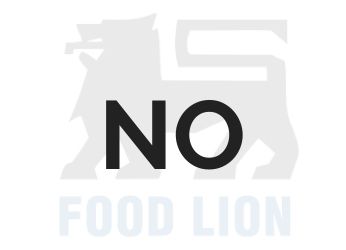
In the fiscal quarter that included the Thanksgiving holiday of 1992, Delhaize America reported company-wide same-store sales declines of 9.5%. In the Dallas/Fort Worth Metroplex, widespread reports were given of stores sending half of their staff home early due to lack of business and of other stores with "virtually zero meat sales". The small, lackluster Food Lion stores were beginning to compete with national retail leaders, such as Albertsons, Kroger, Tom Thumb, and Jewel-Osco, all of which were already well-respected in the Southwest and which operated larger stores with more features, but the effects of the devastating ABC report could not be denied, and sales and revenue plummeted. (See ABC PrimeTime Live section, below.)Īccording to some industry sources, the new stores in Texas, Louisiana, and Oklahoma were already operating below sales projections. In November 1992, a critical PrimeTime Live report that showed unsanitary handling of meat and seafood hurt the chain as they attempted to enter new markets in the Northeast and Southwest. During this time, the chain was the fastest-growing supermarket company in the U.S., as they opened over 100 new stores each year. (Of these eight markets Food Lion penetrated in the 1990s, the only ones that still have stores are Delaware and parts of southern Pennsylvania, such as Hanover).

In the early 1990s, Food Lion stores appeared in new markets such as Delaware and southern Pennsylvania Orlando, Florida Oklahoma City and Tulsa, Oklahoma Shreveport, Louisiana Dallas/Fort Worth and Houston, Texas. The company continued their expansion throughout the late 1980s, opening hundreds of stores in existing markets such as the Carolinas and the Virginias, and entering new markets such as Georgia and Maryland. Throughout the 1980s, Food Lion expanded throughout the Mid-Atlantic and Southeastern United States. The name change, while puzzling for American customers, made economic and historic sense, as Delhaize was once known as "Delhaize Le Lion." On December 12, 1982, Ketner announced the name change to "Food Lion," and by the end of March 1983, all stores had been rebranded. Ralph Ketner realized "lion" needed only two new letters and the movement of another in the chain's signs. Because Delhaize had a lion in its logo, Food Town had asked to use it on product labels and new store signs.

Expansion into Maryland would have been a bigger problem since about 100 independent, but affiliated, stores were called Food Town.

The Food Lion name was adopted in 1983 as Food Town expanded into Virginia, the chain encountered several stores called Foodtown in the Richmond area. Dairy section of a Food Lion in Hampton, Virginia


 0 kommentar(er)
0 kommentar(er)
